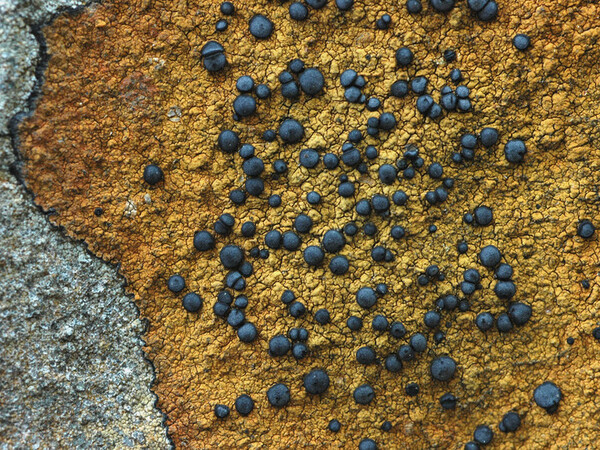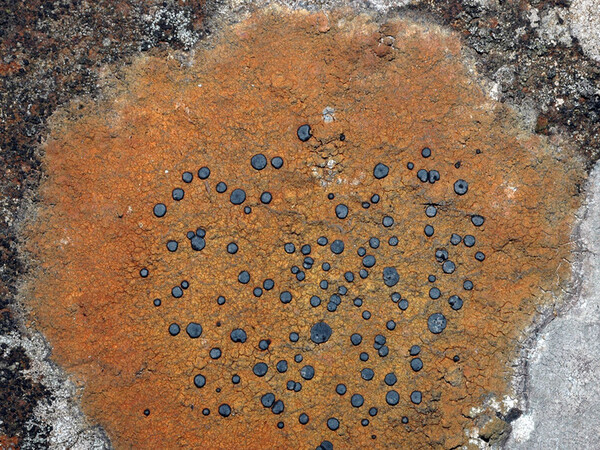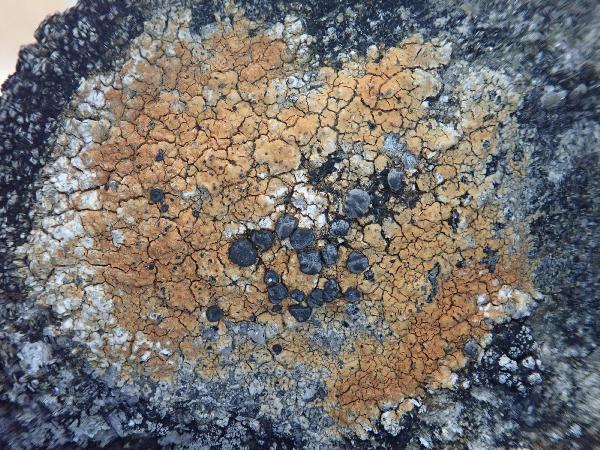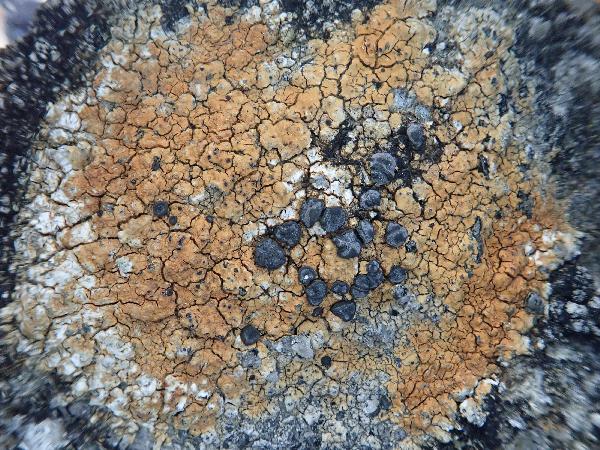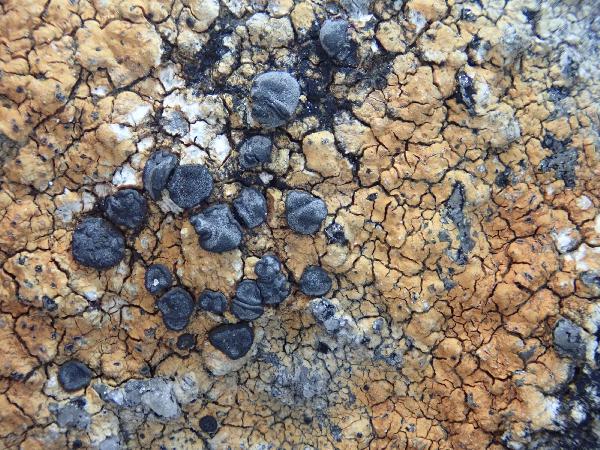Porpidia flavocruenta Fryday & Buschbom
in Fryday, Lichenologist, 37: 9, 2005
Synonyms:
Distribution:
Description: Thallus crustose, episubstratic, 0.1-0.2 mm thick, yellow-orange to yellow-brown, continuous to often irregularly cracked-areolate, with low warts from which the apothecia arise, usually delimited by a black prothallus. Medulla I-. Apothecia lecideine, (0.8-)1.2-1.5(-2.5) mm across, black, sessile and slightly constricted at base, with a flat to slightly convex, rarely umbonate, often weakly grey- or orange-pruinose disc and a raised, persistent, c. 0.1 mm thick proper margin. Proper exciple of radiating hyphae, the outer rim blue-black, 17-25 μm wide, of globose, 6-12 μm wide cells, K+ crimson (solution), N+ red, the inner part orange-brown, of 3-4(-5) μm wide cells, K+ crimson or rarely K-, N-; epithecium pale olivaceous, K-, N+ orange-red, sometimes blue-green in lower part; hymenium colourless, 135-150 μm high, I+ blue; paraphyses coherent, branched and anastomosing, 1-1.5 μm thick at mid-level, with scarcely swollen apical cells; subhymenium colourless, c. 50 μm high; hypothecium dark brown, c. 100 μm high, K–, N-. Asci 8-spored, elongate-clavate, with a thin, outer amyloid layer and a thickened tholus penetrated by a pore, the sides of which are strongly amyloid, Porpidia-type. Ascospores 1-celled, hyaline, ellipsoid, (13-)15-19 x (7-)8-10 μm, rather thin-walled, with a narrow perispore. Pycnidia black, innate to sessile, often surrounded by a thalline layer. Conidia simple, bacilliform, 10-14 x c. 0.8 μm. Photobiont chlorococcoid. Spot tests: cortex and medulla K-, C-, KC-, P-, UV-, K/UV-. Chemistry: thallus without lichen substances.Note: on siliceous boulders and low outcrops; widespread in Europe and also known from Alaska, with a few records from the Eastern Alps (Austria), mostly near treeline. To be looked for in the Italian Alps
Growth form: Crustose
Substrata: rocks
Photobiont: green algae other than Trentepohlia
Reproductive strategy: mainly sexual
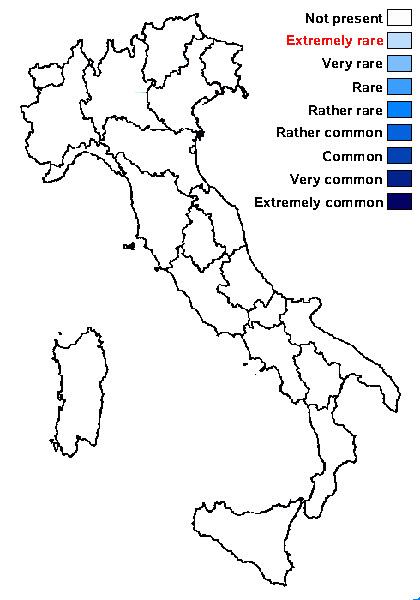
Predictive model
Growth form: Crustose
Substrata: rocks
Photobiont: green algae other than Trentepohlia
Reproductive strategy: mainly sexual

Predictive model
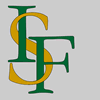 INDEX FUNGORUM
INDEX FUNGORUM
 GBIF
GBIF
